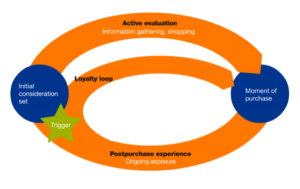A Return To Context: How Audience Obsession Led Marketers Astray
The recent convergence of data and brand safety concerns has put marketers today into a deeply reactive state. On one hand, marketers are having to completely rethink their approaches to audience data, particularly as it relates to third-party sources. Those without solid first-party data strategies have been caught flat-footed not only by GDPR, but also by recent moves at Google and Facebook to further restrict third-party data use and visibility.
Meanwhile, on the brand safety front, many brands are going into protection mode. In some cases, as pointed out by Flipboard’s Nicole McCormack, some brands are wielding axes rather than the required scalpels. They’re wholesale eliminating categories such as news from their media spends for fear of ending up next to less-than-savory political rhetoric or other salacious content.
Action is one thing. (And make no mistake, now is a time for action among advertisers.) But overreaction is quite another. Slashing highly valuable categories such as news from a media budget falls into the overreaction bucket and signifies that some marketers are overlooking much simpler, effective and sustainable options for a course correction.
Reestablishing the Importance of Context
Marketers right now are moving—in some cases, too fast—to solve for the newly erupting problems of data use backlash and brand safety breaches. In many cases, they’re overlooking the fundamental solution that has been in front of them all along: context.
Over the past decade, as marketers have raced to embrace new data sources and technology, they’ve become single-mindedly obsessed with audiences. In doing so, they’ve lost sight of a fundamental truth. That truth? Context matters. They’ve forgotten all about the “right place” in the mad scramble to find the “right person.”
It’s time for a return to context and content. Even in today’s new landscape of data sensitivity and brand safety concerns, marketers can find and connect with the audiences that they deeply value, and they can do so in relevant, high-value environments. Protecting one’s brand doesn’t mean giving up placements alongside dynamic categories of content like news. It means getting smart about how that content is approached and putting the right criteria in place. It means laying aside the axe and picking up the scalpel.
Even better: Targeting ads according to content and context can be highly effective while not requiring intrusive (and increasingly questionable) use of third-party data. Outside the walled gardens of Facebook and Google, whose walls are growing ever-thicker, marketers can effectively target (and have full transparency into) media buys with tight control around the following:
- Brand safety: Outside of Facebook and Google, today’s top publishers are employing stringent measures as they relate to preventing illicit content from crossing their domains. These publishers recognize that today’s algorithms are insufficient for ensuring such safety, and they’re employing real human oversight when it comes to protecting the integrity of their publications and advertiser interests.
- Inventory quality: Marketers don’t have to limit their brand safety efforts to simply avoiding extremist and illegal content. They can target their ads to the high-value, relevant content that puts a halo around their brands.
- Viewability and human traffic: Of course, effective advertising means more than just targeting the right content. It means ensuring ads are viewable and being seen by honest-to-goodness humans, not bots. On the open web, such rigid control is possible.
Marketers today must adapt to a rapidly transforming landscape, but the needed strategic pivot isn’t as dramatic as industry headlines might suggest. It’s time for a return to the fundamental recognition that content is still king. By enabling content and context to resume their guiding roles in a media strategy, marketers will find today’s concerns around data use and brand safety naturally fade into the distance.
(34)







